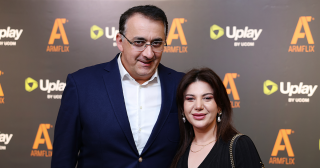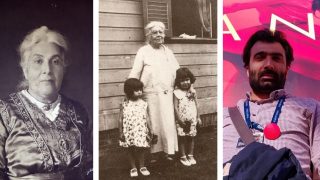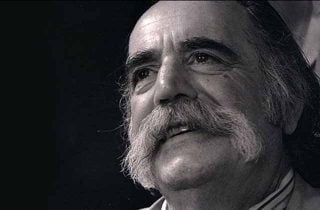
The Idea of Parajanov Museum in Armenia Belongs to Parajanov Himself: Due to Whose efforts and How was it Built?
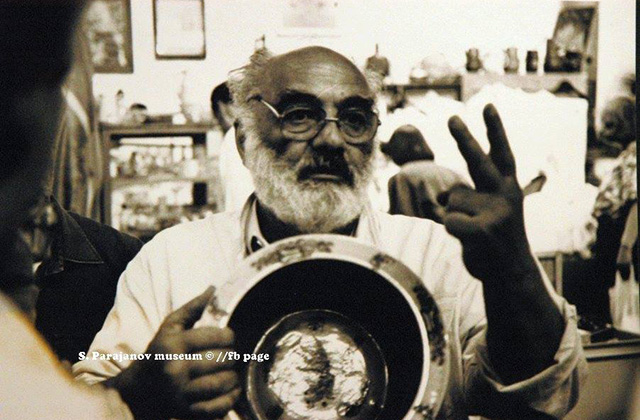
Sergei Parajanov managed to see the plastered rooms of the museum built for him, although the idea of having a museum in Armenia belonged to him.
Museum named after Sargis Parajanyants (Parajanov) has been in Yerevan for 25 years, founded in the period fatal for our country—cold and dark years of revolution, without electricity, parallel to Karabakh war, in the times of destroying everything around, when people were starving and throughout freezing winters without fire, and warm atmosphere in cold rooms. Sergei Parajanov solely managed to see plastered rooms of the museum built for him in Yerevan, although the idea of the very museum in Armenia belonged to him. Maybe with providence similar to the genius and the call of immeasurable humanity he realized that the final resolution of leaving laurels of his own glory in Armenia for a newly independent country will be a big honor in future, and he wasn’t mistaken. The third Republic of Armenia and Parajanov Museum are coevals. For the tourists visiting Armenia and visiting Parajanov Museum is not only a primary desire, but, very frequently, the very purpose of visiting Armenia.
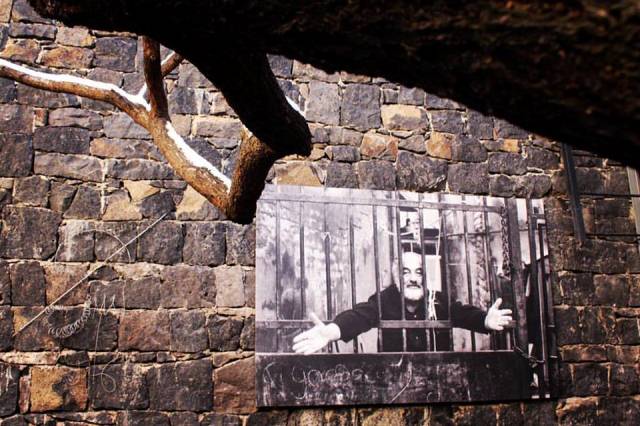
Zaven Sargsyan, founding director of Parajanov Museum, told 168.am on creation of the Museum.
We may boast, that the son of our nation, who was a real genius, wanted to see his museum, here, in Yerevan
– Creation of the Museum was a crucial cultural achievement for our country. Yes, decision of establishment was made in 1988, when in the period of and due to Karen Demirchyan, First Secretary of the Armenian Soviet Socialist Republic, a part of exponents was found by the Government (in that period for 1000 rubles), however, as a result of the earthquake, construction of the building was stopped. Yet in 1991, at the anniversary of death of the director, the Museum needed to open as soon as possible. In this regard, Hambardzoum Galstyan, Head of Executive Committee of Yerevan City Council, helped us greatly; together with some friends, we asked him about that. Hambardzoum was a very positive figure, and now I’d like to say, if not him, the Museum won’t be opened. Those were ineffably hard years of heavy blockade: it was to even hard find a nail, and lots of funds were necessary to for the Museum exposition. Throughout these years I was constructing my summer house, and some construction materials were left there. We brought them—tools, materials and etc. and with the help of friends we launched our work.
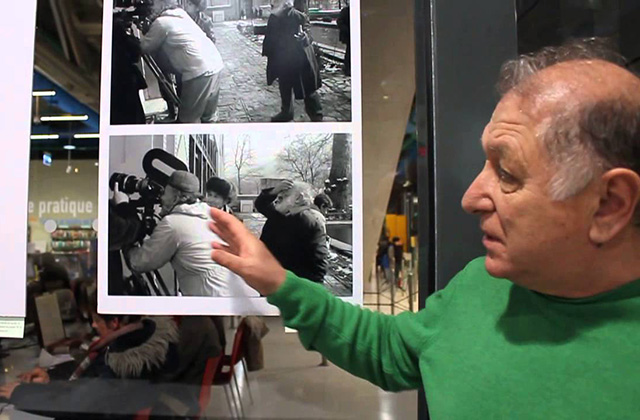
Hambardzoum’s support was great in communal issues: water, communication—telephone, not speaking of the fact that the director’s museum should have at least a footage or a TV, to show movies to the visitors.
In a few days he found and sent the equipment, which was difficult to find in that period. If there was someone dishonest in his place, he’d say: it’s a good building in a good location, why do we allocate it for a museum; we’ll keep it for ourselves. But he didn’t. The Museum was build, and little by little favored by people of Yerevan, and currently it’s already hard to imagine Yerevan without this Museum. Besides that, we’ll have something to boast, that the son of our nation, who was a real genius, expressed his wish to see his museum here, in Yerevan.
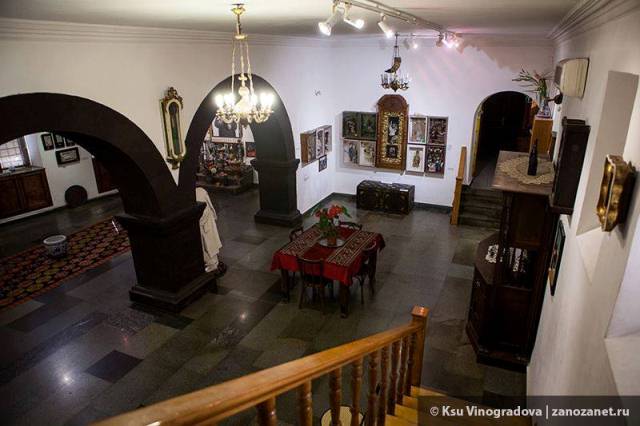
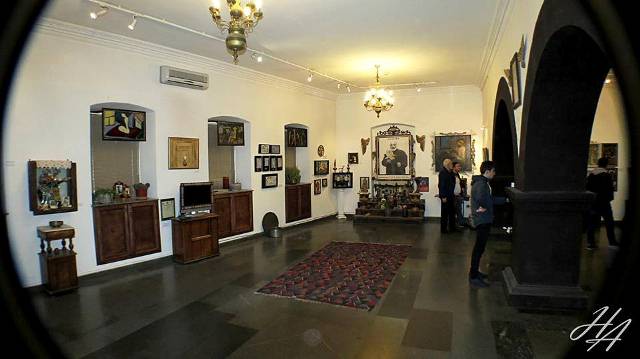
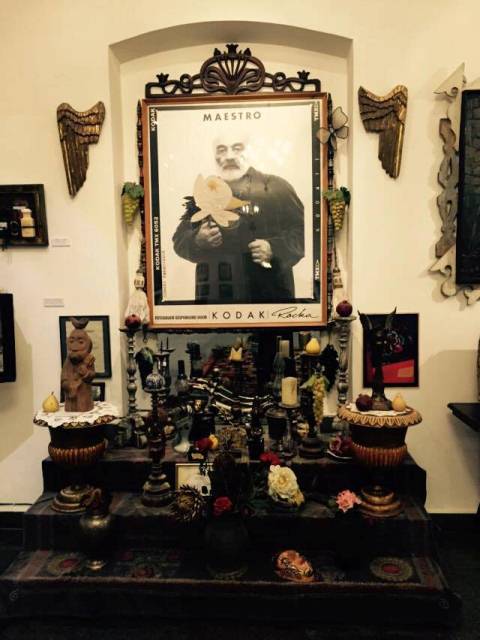
Location for the Museum was chosen by Karen Demirchyan
– The territory for Parajanov’s future museum was chosen by Karen Demirchyan. Dzoragyugh is one of the oldest districts in Yerevan. There were earthen houses with flat roofs, gradually gliding to Hrazdan River, which had a very nice view. Although in the 60s the houses collapsed as a result of rains and landslides, and the population was moved to other settlements, painter Grigor Khanjyan and distinguished artist Vanik Sharamberyan were convincing Karen Demirchyan to establish a new ethnographic district named Dzoragyugh: to renovate old houses with flat roofs and allocate them to painters, jewelers, artists, locksmiths and others. In fact, it was a brilliant idea; so the new district was established. Within this very program the territory for Parajanov Museum was allocated.
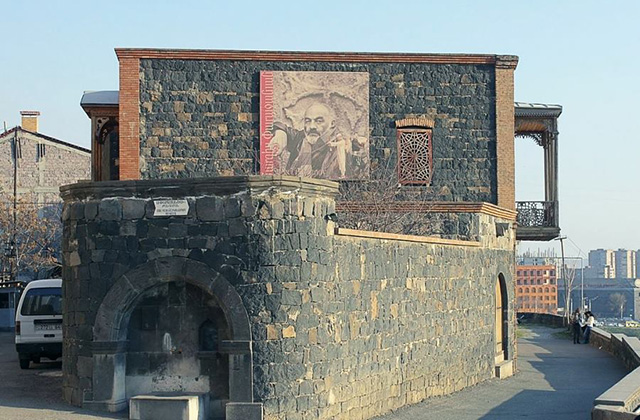
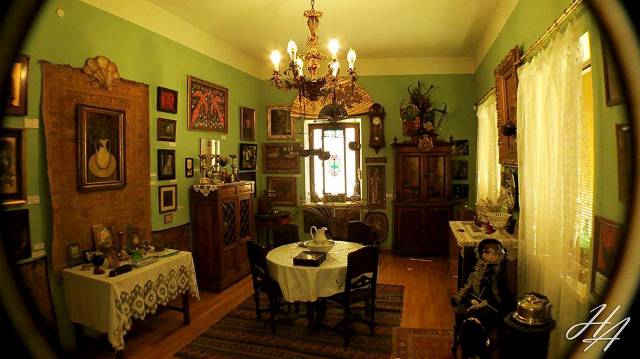
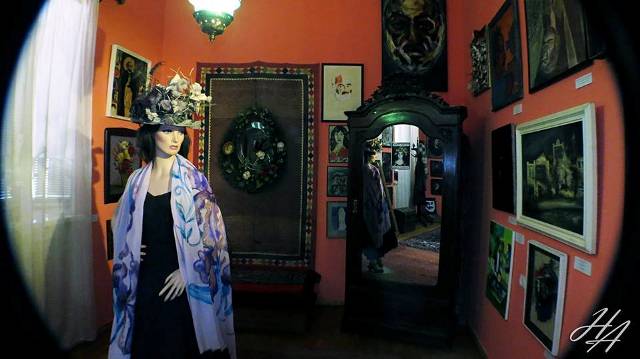
Parajanov was very excited with the idea of the museum to be built for him
–Parajanov liked both the idea of constructing a museum and especially the location. There is even an interview given in Italy, where he says, “A two-floor museum with a view to Ararat has been built for me in Armenia…” of course, it was a bit exaggeration, but he was so proud and happy, that he’s telling about it everywhere.
“Zaven, do something, so that my creations were moved to Yerevan”
–Parajanov himself moved his private belongings to Yerevan. We had been friends yet since 1978. One day, when I was in Tbilisi, he said, “Zaven, do something, so that my creations were moved to Yerevan.” I told, it’s best way is organizing an exhibition. He said, “Ok, do it.” Many people don’t imagine now, that in 1987 there were people, who were even afraid to utter Parajanov’s name, stand next to him and take photos of him. I speak rather seriously. Yuri Melik-Ohanjanyan, the then Minister of Culture, whom I deeply respected, once said, “Don’t go there, don’t appear with Parajanov, they’ll know, and you don’t imagine what will happen to you…” I knew, I was sure, it’ll be very easy to hinder, so that exhibition was failed, however, I had experience working with the authorities, as I worked in the Government’s department of international affairs for 12 years…But I wouldn’t tell Parajanov about that, as I knew, he didn’t like them. I was thinking of what to do, so that the exhibition was held. One day I visited Parajanov, to speak of organizational matters of the exhibition. I said, Sergei Iosevich, let’s print posters and booklets, paint walls of the exhibition hall, to appear with a fresh look before the audience…
I simply didn’t want to tell him, that there were other problems, I simply intended to gain some time. He agreed. 15 January 1988 was the deadline for the exhibition. There was a law on making plans on the forthcoming exhibitions (currently it also exists, but that time special attention was paid to it). By saying I was familiarized with the system, I mean I was in and I knew, if you ask them for snow in winter, they won’t refuse, and will say—sure, with great love, there is no any problem, but wait a bit, bring a reference, that you want to take some snow, to know who you are, why you need that snow and etc. Familiar with those silly things (the system is the same everywhere, and the structure of a person, especially of a Soviet personality, is that one, and we are still in that Soviet), and decided to act silently.
I knew, in fact, nobody was reading those plans, and saying nothing to anybody, I took the museum plan and submitted: N 1 exhibition: works of Sergei Parajanov, N 2 exhibition: Artsakh art, and etc…The plan was submitted, passed from department to department, and as I imagined, it was confirmed. Parajanov brought exhibits on January 12 from Tbilisi by a truck and stopped just before the building of the Folk Art Museum. The whole city was in a mess. Friends started to come—Parajanov was planning an exposition… The next day, I receive a call from the Central Committee, and they say they heard something, and wanted to clarify whether it’s true or not. I ask what they heard, and they ask whether I’m planning an exhibition. I said, yes, it’s our planned exhibition. And they wonder, how the plan of exhibition after Parajanov might be approved, and I tell them to ask it from them. I replied, like everyone, we work pursuant the plan, and this is our planned exhibition and that’s it.
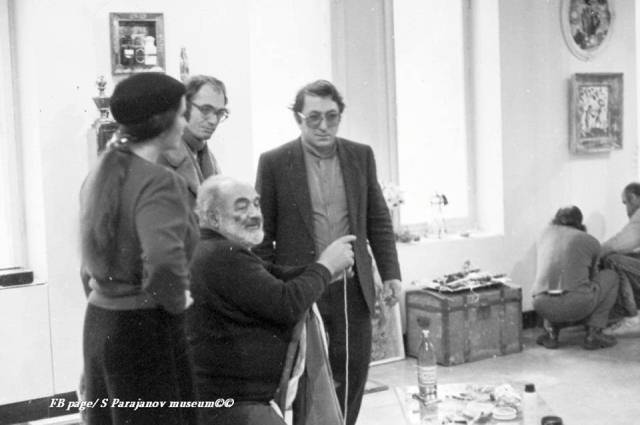
Sergei Parajanov’s first exhibition. In the photo—Sergei Parajanov, Tigran Mansurian, Zaven Sargsyan
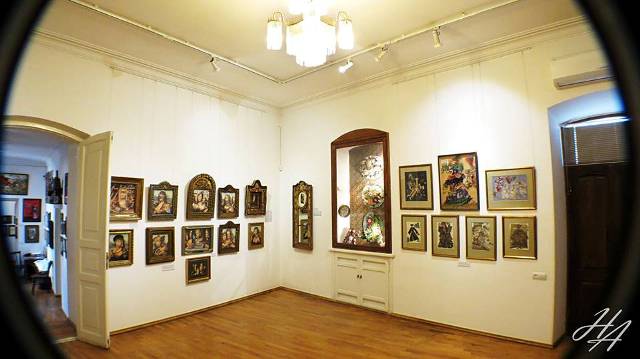
Parajanov’s first exhibition in Yerevan
– Meanwhile I explain to them, that it’s a “legal” exhibition, the secretary calls me (I don’t want to mention the name, as I treat that person well), and tells me: how did you succeed? And nobody believes it was “legal”…Opening of the exhibition was launched in the Folk Art Museum, where I was the director then. It was a big success, and it was Parajanov’s first exhibition in Yerevan, it was also a great opportunity to move Parajanov’s belongings to Yerevan for the Museum.
Funds were necessary for establishment of the Museum
–I and Aleksan Matveevich (MP of 3rd and 4th convocations of USSR Supreme Council, and since 1953, member of the Communist Party), with whom I was in friendly ties, applied to Janik Janoyan, the then Minister of Finance. I explained to him that throughout his all life Parajanov has led a modest lifestyle, not saying, even lived poorly. I offered, that a part of exhibits were bought by the state, on account of which, we’d start construction of the museum. So it went. The state bought the considerable part of the exhibits from the director, and we launched construction of the Museum. You know, what it gave us. Georgians visit and say: how come, Parajanov’s whole collection passed into the possession of Yerevan?…I say major part of Parajanov’s work was bought by our state and passed on to the Museum. It’s already under our possession, do you have something to say in this regard? If you had enough brains you’d buy his works. Not speaking of the fact, that I had started buying Parajanov’s works before, from the fund of the Folk Art Museum. Any museum of the Soviet Union space could afford it in that period.
From the summer of 1986, when I became the director of the Folk Art Museum, 3 days later I left for Tbilisi, met Parajanov, and said, “Sergei Iosevich, I’m a museum director now and I want to buy some of your works.” He was greatly surprised, as he knew me as a photographer. He asked which museum was that, and I said: the Folk Art Museum. He asked: what do you know of folk art? I said, I understood what I understood, and I came to buy some of his works. He said, ok. There was a very nice series of ceramic, which was on the table at that moment, I said, I wanted to buy them. He said, if I wanted, I might take them. I immediately put them in the car and drove to Yerevan. Currently they hang on the first floor of the Museum. So, I bought many of his works, which make a considerable part of our Museum. So the Museum was built.
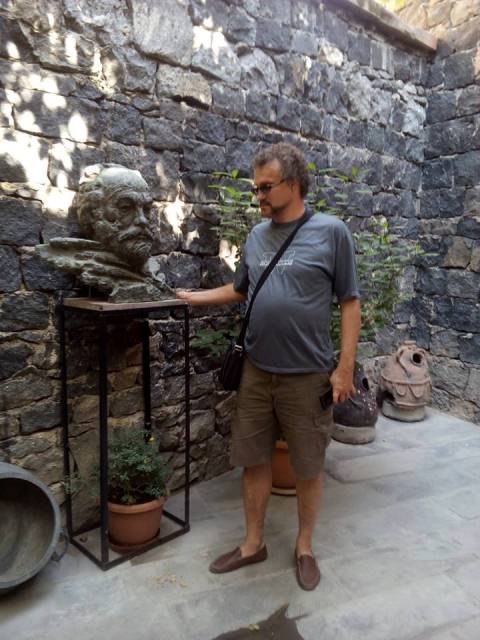
Parajanov didn’t participate in interior decoration of the Museum
– Parajanov was already ill, when we last brought him to this house. It was in 1990. That time he was in “Lechkomissia” N 4 hospital of the administration. We showed the house to him, he went up and he observed it. He was content and happy. That time walls were plastered. He particularly liked the arches. He marked some details for himself. Up to now I’m keeping them. He was already thinking of the exposition. He was eager to move to this house as soon as possible, however, unfortunately, due to the earthquake, the construction was developing rather slowly, and in that period we already knew about his illness. However, what is crucial, at least, he saw his Museum.
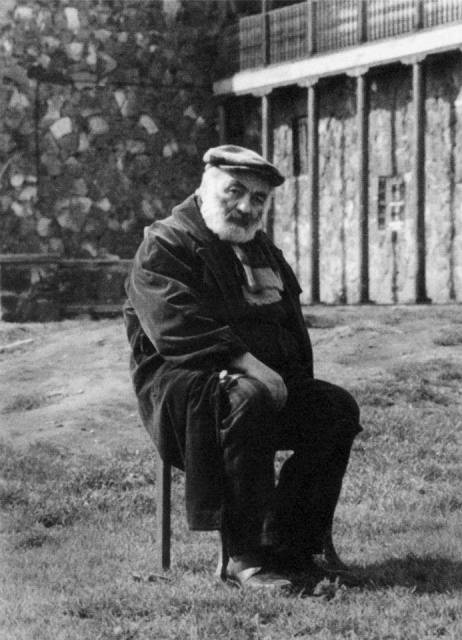
S.Parajanov in the yard of his House-Museum. In the photo he’s already seriously ill. Unfortunately, he didn’t manage to see his Museum and the house in his fatherland (Photo by Z.Sargsyan)
Fate of Parajanov’s favorite objects
– Parajanov would say, “I express my attitude towards people by objects. The object contains warmth in it. Lots of people touched those objects. And they contain the energy of those people.” In this sense, an object was of big importance for Parajanov. He was such a person, to get some gift today, and give it to another the next day. And not for the reason they weren’t expensive for him, just the contrary.
Sergei Parajanov vs Sargis Parajanyants
– His actual name is Sargis Parajanyants, however, his father (Hovsep Parajanyants, later on—Iosif Parajanov) was made to change his surname. If in tsarist Russia someone wanted to start some business and succeed, they made people take Russian names and surnames. Thus, people were becoming bearers of Russian names and surnames. Main question of most tourists visiting the Museum is this: why does the director bear a Russian surname? Is he Armenian or a Russian? Although his Armenian surname is fixed at the entrance of the Museum: Sargis Parajanyants. Interesting enough, his aunt, living in Tbilisi, didn’t change her surname, neither did his uncle, who moved to Yerevan long ago.
The most crucial achievement for over 25 years
– We hosted very famous and worthy visitors in this Museum. They came, watched everything, wrote about the Museum and spread it all over the world. Throughout these years we’ve published many albums, we’ve held crucial and successful exhibitions, also in different countries, during which, naturally, parallel to the personality of Parajanov, a lot was spoken about Armenia as well. However, let’s leave the famous apart. The most estimated and valuable visitor for me is the ordinary Armenian coming from regions or abroad. What is important, in a few minutes after visiting the Museum they get excited and tears appear on their eyes. They don’t want to live the Museum. They go out, sit in the yard, then again enter the Museum, and say: you know, we can’t help staying here, we can’t leave this house and this atmosphere. I know the reason, as there is human warmth here, Parajanov’s spirit is very much alive in this house. It’s the most valuable for me.
I have been to Kiev recently, met Parajanov’s wife, friends and everybody mentioned it. They memorized, that Parajanov had a special feature of attracting people, and keeping next to him. Once one of his friends told something very astonishing, “We were being impregnated next to him.” He had such an influence, that after leaving him, people were eager to work, create something new, and do something good. That feeling exists until now, within the walls of this house. During those hard years, when there was no electricity, when it was dark and cold, we worked uninterrupted. I said we need to work, Mozart and Bach should be heard within these walls, so that people won’t get disappointed, as those were hard times, when everything was collapsing, on the one hand, the war, and the earthquake on the other, starvation and blockade…
It was crucial for me, that people knew there was a house, a place, where art was still alive, life was going on, from which people, fighting in those years, were “obliged” to live, at least for an undeniable truth, that art is the highest result of human activity. Surprising enough, it’s been a long time that Parajanov isn’t alive, however, his art makes a person feel all this, maybe again to prove the fact, that we dealt with the human type of a genius.
By Nvard Manvelyan





